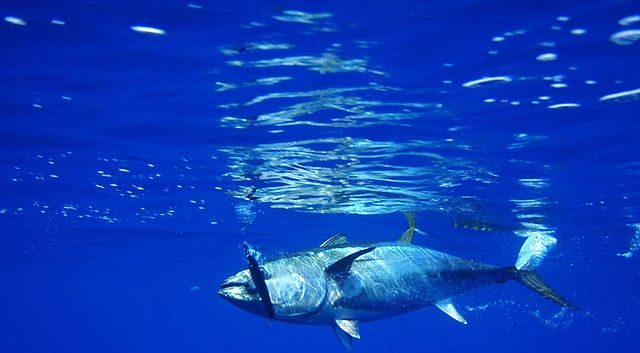Drifting fish aggregating devices (dFADs) are altering tuna migration patterns and polluting seasides in 37% of the earth’s ocean area.
A May 2025 study on Science Advances shows that between 2007 and 2021, 1.41 million such devices reached 157 sovereign waters.
The gadgets usually attract schools of yellowfin, albacore, skipjack and bigeye tuna species, altering their natural feeding and migratory patterns.
A followup on the study in late May 2025 further highlights the coastal damage by stranded devices.
The co-writer of the study, Boris Worm, told Malaysia’s Mongabay that the environmental cleanup of dFADs can be costly.
For one, these floating rafts with their nettings that attract fish beneath can drift anywhere along coral shorelines.
Their random drift far from actual fishing grounds makes it impossible to apportion accountability to satellite-connected fishers.
Pros and Cons
By being highly precise, dFADs promote fuel economy for long distance purse seine (long net) boats.
The gadgets harness ocean food in their nets which attract schools of tuna to one central location, thus annulling random fishing.
Defendants of these devices not only cite such benefits but also affirm that precision fishing improves island fishery economy.
They also say that the fish is a major source of global protein, especially in the seafood canning market. One such example is the lucrative U.S.’ tuna industry, which thrives on minor island tuna canneries.
The biggest concern however are that stranded dFADs pollute coral reefs, which are important for oxygen conservation.
Because 43% of the drifts happen in just Somalia, the Seychelles and French Polynesia, coral reef rehabilitation is usually negligible.
Protected Marine Parks
And even in developed nations, the problem of the devices drifting into marine parks has become a major issue.
In fact, 20 of the places that have reported such stranded gadgets are all protected marine parks.
Although purse seine vessels do not enter such jurisdictions, they fish nearby by following fish migrating from these parks.
The main drawback of combating the unscrupulous use of tuna fish aggregating devices is that only affected countries clean up. For this reason, the environmental toll continues, as the following statistics show.
Tuna Fish Aggregating Devices Statistics
Fish aggregating devices (dFADs) stud 37% of the world’s tuna fisheries, according to a May 2025 study. These dFAD-affiliated fisheries cover over 134 million km2 of water, mostly in the Pacific and Indian Oceans. Drifting devices often shore up on the coastlines of 104 marine jurisdictions. In the Pacific alone, 80% of these devices are lost without a trace by their operators.
Their rate of use dramatically increased in 2022 to 72,068 units, over double 2020’s 25,690 units, according to Nature. Fishing companies defend their use for they help land the 5.2 million tonnes of worldwide tuna landings each year. In a nutshell, tuna catches account for 8% of wild-caught seafood for human consumption.
Are Indian Ocean’s tuna affected by dFADs?
The Indian Ocean yielded 1,187,565 tonnes of tropical tuna in 2022, some of which by overseas boats from Europe. Of all tuna catches by purse seine vessels on the Indian Ocean, 85% come through dFADs. As of 2025, yellowfin tuna is officially overfished in the Indian Ocean. According to the Bluemarine Foundation, it will take 30% reduction in catches from 2021 onward to realize optimal stock by 2030.
How is dFAD deployment on the Pacific?
According to the Pacific Community, 46,000 to 65,000 dFADs undergo deployment on the Pacific, annually. Of these, 80% continue drifting at sea with an unknown ending. While 7% of drifting entanglements happen on the western Pacific, it is unknown how many drift on the eastern Pacific.
